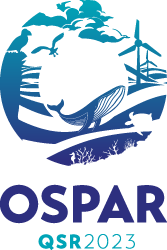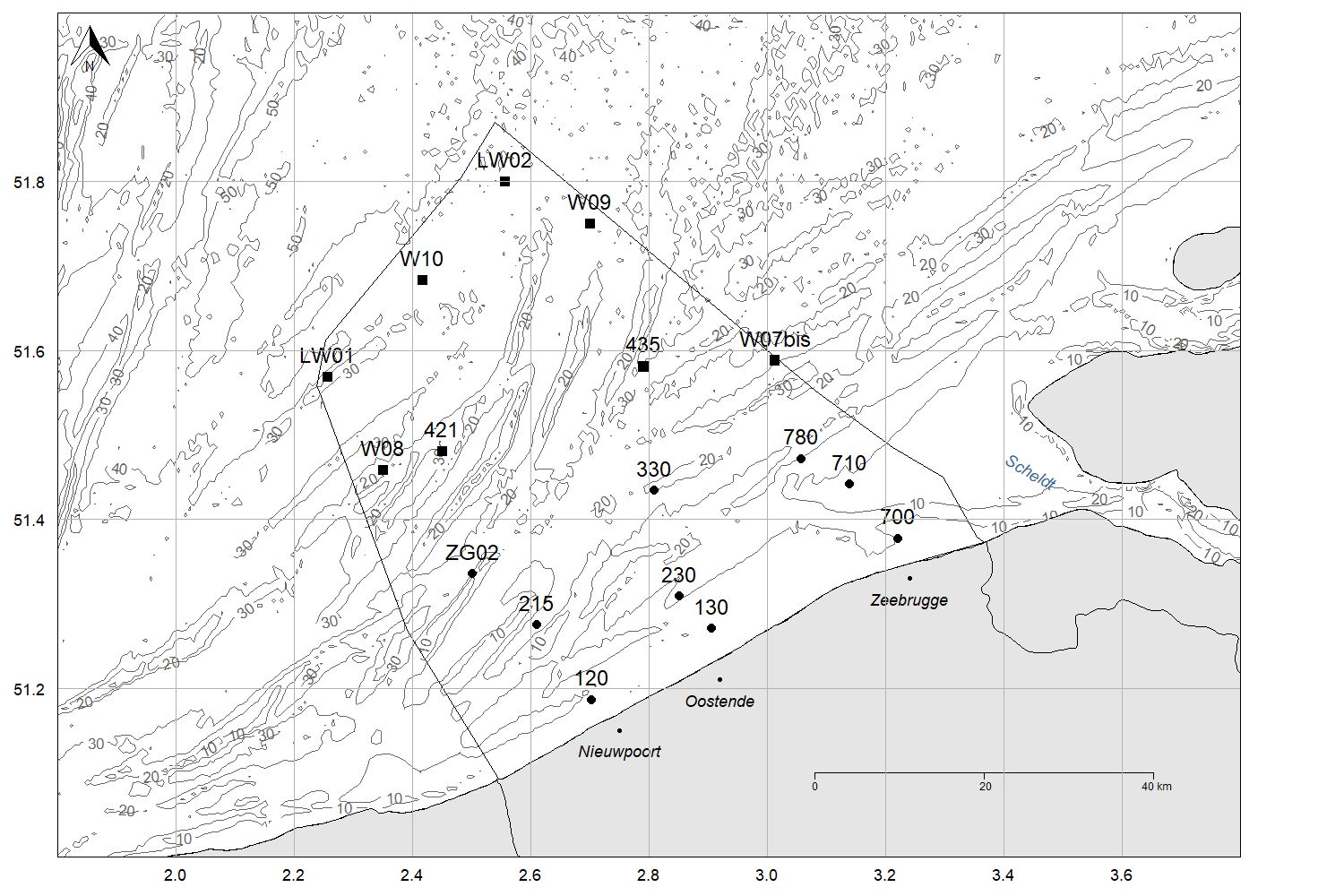You are here
Observing plankton to understand ocean health
Increasing human activities are putting the ocean under stress, threatening the ecological health of marine ecosystems and the services they provide to society. Since plankton are sensitive to changes in environmental conditions and are short-lived, they can be used as early warning systems for the assessment of water quality. Plankton-based indicators are currently being used to identify large-scale processes such as the effects of climate change on the diversity of pelagic (or water column) habitats and to track responses in relation to local human pressures, such as eutrophication, pollution and the impacts of invasive species. In this way, plankton indicators are used as management tools for policy demands and to support conservation issues.
Keywords: Plankton, indicators, Good Environmental Status, biodiversity, Marine Strategy Framework Directive, Pelagic Habitats

OSPAR
Objectives
Most of Europe’s marine waters face multiple pressures from human activities leading to water quality degradation. To improve the health of its marine ecosystems and prevent biodiversity loss, the EU endorsed the Marine Strategy Framework Directive (MSFD) as a holistic policy to protect the marine environment of the seas around Europe while enabling the sustainable use of marine goods and services.
For the implementation of the MSFD, European Member States (MS) are required to evaluate the Good Environmental Status (GES) of their marine waters every six years. In terms of biodiversity, the MSFD applies a comprehensive ecosystem approach by integrating multiple biological components (fish, birds, mammals, benthic and pelagic communities) and using a variety of indicators to assess if the objective of GES is achieved. Currently, indicators based on data from plankton communities are being proposed to assess the biodiversity and condition of pelagic habitats, the functioning of food webs and the status of eutrophication.
In 2017, OSPAR encouraged to improve assessment methodologies, such as the development of pelagic biodiversity indicators, to carry out the North-East Atlantic ecosystem assessment (McQuatters-Gollop et al. 2022; fig. 1). In June 2023, the OSPAR Quality Status Reports will give an update on the assessment of environmental status of the North-East Atlantic against the objectives of the North-East Atlantic Environmental Strategy (NEAES 2020, OSPAR website). In this assessment, the LifeWatch zooplankton data (2015-2019) are being used to calculate the common OSPAR “Plankton Lifeform” indicator (PH1) in two ecoregions, namely the “Scheldt plume 1” and the “Southern North Sea”. These regional assessments can provide the opportunity to OSPAR Contracting Parties to use the information and methodologies for their national MSFD reporting obligations.
Fig. 1 OSPAR assessment of marine biodiversity in the North-East Atlantic (from McQuatters-Gollop et al. 2022).
Methodology
According to Art. 11 of the Marine Strategy Framework Directive (MSFD), EU Member States must establish monitoring programmes for the ongoing assessment of the environmental status of their marine waters and these should be based on the best available science and technology. To formally assess the condition of pelagic habitats, appropriate monitoring of the plankton communities is required to obtain individual parameters (plankton biomass, abundance and community composition) for indicator calculations. The plankton timeseries from the LifeWatch observatory are formally integrated in the national MSFD monitoring programme since 2018 (ANSBE-P13 and ANSBE-P14).
For the next MSFD reporting cycle of Art. 8-9-10, Pelagic Habitats (under Biodiversity Descriptor 1) will be assessed for the first time in the Belgian Part of the North Sea (BPNS) using the LifeWatch plankton timeseries. The data will be used for the calculations of the three common OSPAR Pelagic Habitat indicators, namely “Plankton lifeform index ratios” (PH1/FW5), “Plankton biomass and abundance” (PH2) and “Plankton community diversity” (PH3) over the assessment period 2016-2021. (https://www.ospar.org/work-areas/bdc/biodiversity-monitoring-assessment-1/biodiversity-common-indicators).
Used components of the LifeWatch Infrastructure
The Belgian LifeWatch observatory carries out cost-effective and high throughput plankton monitoring using state-of-the-art equipment and processing methods, such as automated classification, in addition to more traditional techniques. Since 2012, plankton samples are collected during multidisciplinary sampling campaigns onboard of the RV Simon Stevin, visiting nine nearshore stations with monthly frequency and an additional eight offshore stations on a seasonal basis in the BPNS. In the laboratory, the microscopic organisms in the water samples are processed and classified using semi-automated imaging systems, the FlowCAM for phytoplankton and the ZooScan for zooplankton, followed by manual validation by taxonomic experts.
As part of the Belgian LifeWatch E-science infrastructure, users interested in biodiversity and ecosystem research will be able to visualize and use the plankton data, products and web services related to plankton indicator calculations.

Output
Key Publications
McQuatters-Gollop, A., Guérin, L., Arroyo, N.L. Aubert, A. Artigas, L.F. Bedford, J. Corcoran, E. Dierschke, V., Elliott, S.A.M. Geelhoed, S.C.V. Gilles, A. González-Irusta, J.M. Haelters, J. Johansen, M. Le Loc'h, F. Lynam, C.P. Niquil, N. Meakins, B. Mitchell, I. Padegimas, B. Pesch, R. Preciado, I. Rombouts, I. Safi, G. Schmitt, P. Schückel, U. Serrano, A. Stebbing, P. De la Torriente, A. Vina-Herbon, C. (2022) Assessing the state of marine biodiversity in the Northeast Atlantic. Ecological Indicators 141. https://doi.org/10.1016/j.ecolind.2022.109148
Rombouts, I., Simon, N., Aubert, A., Cariou, T., Feunteun, E. Guérin, L. Hoebeke, M. McQuatters-Gollop, A. Rigaut-Jalabert, F. Artigas, L.F. (2019) Changes in marine phytoplankton diversity: Assessment under the Marine Strategy Framework Directive, Ecological Indicators 102: 265-277. https://doi.org/10.1016/j.ecolind.2019.02.009.
Ostle, C., Paxman, K., Graves, C. A., Arnold, M., Artigas, L. F., Atkinson, A., Aubert, A., Baptie, M., Bear, B., Bedford, J., Best, M., Bresnan, E., Brittain, R., Broughton, D., Budria, A., Cook, K., Devlin, M., Graham, G., Halliday, N., Hélaouët, P., Johansen, M., Johns, D. G., Lear, D., Machairopoulou, M., McKinney, A., Mellor, A., Milligan, A., Pitois, S., Rombouts, I., Scherer, C., Tett, P., Widdicombe, C., and McQuatters-Gollop, A. (2021) The Plankton Lifeform Extraction Tool: a digital tool to increase the discoverability and usability of plankton time-series data, Earth Syst. Sci. Data, 13, 5617–5642, https://doi.org/10.5194/essd-13-5617-2021.
Scripts
Relevant projects
MARCOBOLO (no weblink yet)
DTO-BIOFLOW (no weblink yet)
Contact
E-mail: info@lifewatch.be
Useful links
FLOWcam: Learn about the Flow Cytometer And Microscope of the Belgian LifeWatch Observatory.
ZooScan: Learn more about the ZooScan of the Belgian LifeWatch Observatory.
EU Marine Strategy Framework Directive
OSPAR Quality Status Report 2023
